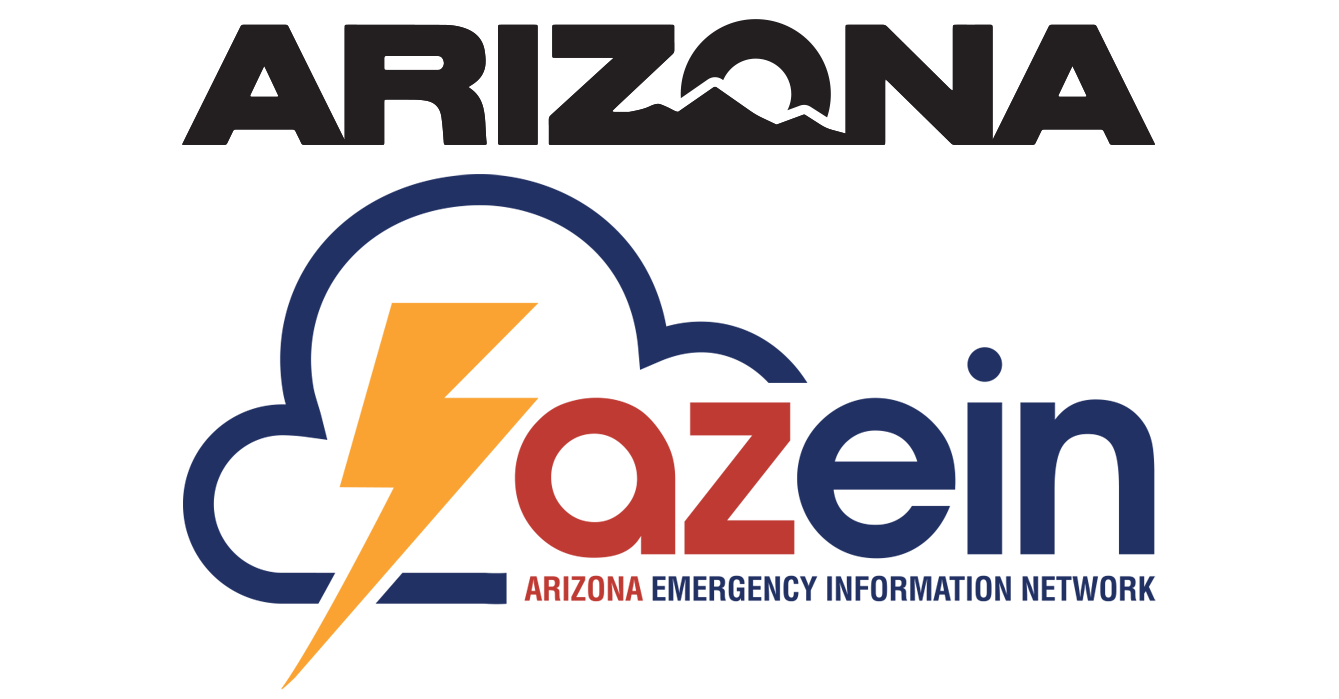Earthquakes
An earthquake occurs when the breaking and shifting of underground rock causes the earth to shake suddenly and rapidly. Earthquakes often happen without warning. They can cause buildings to collapse and heavy items to fall, resulting in injuries and property damage.
All 50 states and five U.S. territories are at some risk for earthquakes. Since 1850, Arizona has had more than 20 earthquakes with magnitudes of 5.0 or higher. Arizona earthquake preparedness video.
BEFORE
- Build an emergency go kit and make a family communication plan.
- Practice Drop, Cover, then Hold On with family and coworkers. Drop to your hands and knees. Cover your head and neck with your arms. Crawl under a sturdy table or desk if nearby. Hold on to any sturdy furniture until the shaking stops. If a table or desk is not close, crawl next to an interior wall.
- Secure items, such as bookcases, refrigerators, televisions and objects that hang on walls. Store heavy and breakable objects on low shelves.
- Consider making improvements to your building to fix structural issues that could cause your building to collapse during an earthquake.
Read More
DURING
- Protect yourself right away. Drop, Cover and Hold On!
- If you are in a vehicle, pull over and stop. Set your parking brake.
- If you are outdoors, stay outdoors away from buildings.
If Indoors
- DROP to the ground; take COVER by getting under a sturdy table or other piece of furniture; and HOLD ON until the shaking stops. If there isn’t a table or desk near you, cover your face and head with your arms and crouch in an inside corner of the building.
- Stay away from glass, windows, outside doors and walls, and anything that could fall, such as lighting fixtures or furniture.
- Stay in bed if you are there when the earthquake strikes. Hold on and protect your head with a pillow, unless you are under a heavy light fixture that could fall. In that case, move to the nearest safe place.
- Do not use a doorway except if you know it is a strongly supported, load-bearing doorway and it is close to you. Many inside doorways are lightly constructed and do not offer protection.
- Stay inside until the shaking stops and it is safe to go outside. Do not exit a building during the shaking. Research has shown that most injuries occur when people inside buildings attempt to move to a different location inside the building or try to leave.
- DO NOT use elevators.
- Be aware that the electricity may go out or the sprinkler systems or fire alarms may turn on.
Read More
AFTER
- Expect aftershocks. These secondary shockwaves are usually less violent than the main quake but can be strong enough to do additional damage to weakened structures and can occur in the first hours, days, weeks, or even months after the quake.
- When the shaking stops, look around to make sure it is safe to move. Then exit the building.
- Help injured or trapped persons. Help those who may require special assistance such as infants, the elderly and people with access and functional needs. Give first aid where appropriate. Do not move seriously injured persons unless they are in immediate danger of further injury. Call for help.
- Look for and extinguish small fires. Fire is the most common hazard after an earthquake.
- Stay informed with the latest information from emergency officials via battery-operated radio, TV, social media and cell phone alerts.
- Text messages may be more reliable than phone calls. Save phone calls for emergencies.
- Go to a designated public shelter if your home has been damaged and is no longer safe.
- Stay away from damaged areas. Stay away unless your assistance has been specifically requested by police, fire, or relief organizations. Return home only when authorities say it is safe.
- Be careful when driving after an earthquake and anticipate traffic light outages.
- Make your safety a priority as you begin clean up and recovery.
- Open cabinets cautiously. Beware of objects that can fall off shelves.
- Find out how to keep food safe during and after an emergency.
- Put on long pants, a long-sleeved shirt, sturdy shoes and work gloves to protect against injury from broken objects.
- Clean up spilled medicines, bleaches, gasoline or other flammable liquids immediately. Leave the area if you smell gas or fumes from other chemicals.
- Inspect the entire length of chimneys for damage. Unnoticed damage could lead to a fire.
- Inspect utilities.
- Register on the American Red Cross “Safe and Well” website so people know you are okay.
If Trapped Under Debris
- Do not light a match.
- Do not move about or kick up dust.
- Cover your mouth with a handkerchief or clothing.
- Tap on a pipe or wall so rescuers can locate you. Use a whistle if one is available. Shout only as a last resort. Shouting can cause you to inhale dangerous amounts of dust.
Read More
RESOURCES
- Shakeout
- Earthquake Preparedness: What Every Childcare Provider Should Know
- How to Guides to Protect Your Property or Business from Earthquakes
- U.S. Geological Survey Earthquake Hazards Program
- Arizona Geological Survey
- Fate of the Santa Rita Fault (video)
- Arizona Earthquake Information Center
- Earthquake Timelapse: Arizona Earthquakes M2.75 - M7.5: 1860-2019 (video)
- Arizona Earthquake Catalog, 1860-2019 (video)
- Arizona Earthquake Catalog, 2019-1860 (video)
- Ready.gov
Read More
source: Ready.gov)

